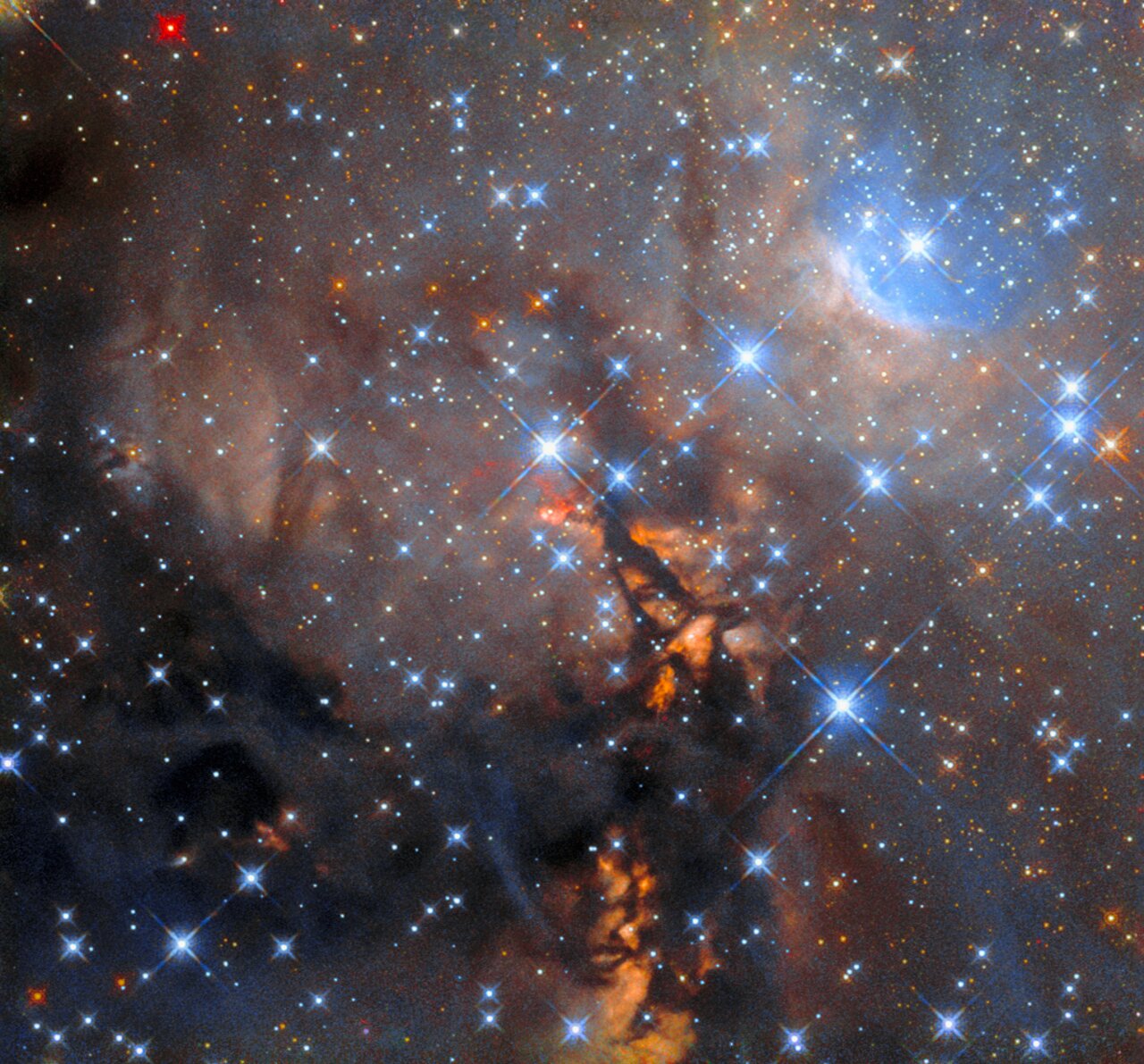Cosmos OH 339.88-1.26
The protostellar object OH 339.88-1.26, which lies 8 900 light-years from Earth in the constellation Ara, lurks in this dust-filled image from the NASA/ESA Hubble Space Telescope. Winding lanes of dark dust thread through this image, which is also studded with bright stars crowned with criss-crossing diffraction spikes. The dark vertical streak at the centre of this image hides OH 339.88-1.26, which is an astrophysical maser. A maser — which is an acronym for “microwave amplification by stimulated emission of radiation” — is essentially a laser that produces coherent light at microwave wavelengths. Such objects can occur naturally in astrophysical situations, in environments ranging from the north pole of Jupiter to star-forming regions such as the one pictured here. This image comes from a set of Hubble observations that peer into the hearts of regions where massive stars are born to constrain the nature of massive protostars and test theories of their formation. Astronomers turned to Hubble’s Wide Field Camera 3 to explore five intermediate-mass protostars at infrared wavelengths. The Hubble observations were supported by other state-of-the-art observatories including ALMA, the Atacama Large Millimeter/submillimeter Array. ALMA is composed of 66 moveable high-precision antennas which can be arranged over distances of up to 16 kilometres on a plateau perched high in the Chilean Andes. Further data were contributed by the Stratospheric Observatory For Infrared Astronomy (SOFIA), which is a telescope that — until recently — operated out of a converted 747 aircraft. [Image Description: The field is field with hundreds of bright stars. They are primarily blue in colour, with scattered smaller stars visible in yellow/orange. The background is dominated by cloudy grey dust, with permeating regions of dark black and orange.]
